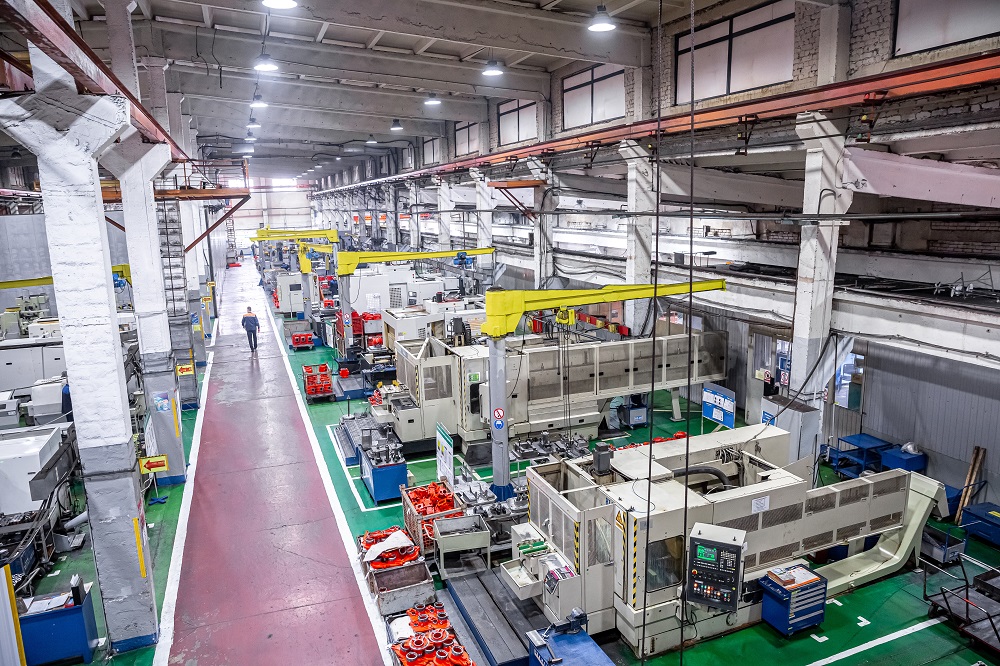COVID-19 created unprecedented disruption in the manufacturing sector — both in terms of scale and the unevenness of its impact. The aerospace and automotive industries were hit especially hard, while medical device manufacturers saw a surge in demand. Factories that remained open throughout the pandemic contended with extreme changes in staff size, floor layout, spacing, and sanitation standards.
Now, over a year into the pandemic, life is beginning to return to normal, with signs of a strong recovery. In May 2021, the Institute for Supply Management reported new data that points to manufacturing revenue increasing by 7.2 percent this year, exceeding the previous estimate of 6.9 percent from December 2020.
Risk Factors for Manufacturing Workers
At the start of the pandemic, the Centers for Disease Control and Prevention (CDC) drafted guidelines for maintaining safe work environments. For factory workers, the agency determined the biggest exposure risks are:
- Distance between employees
- Duration of contact
- Types of contact (respiratory or contaminated surfaces)
The many changes implemented on work floors — such as limiting the number of employees in a given area, social distancing, and plexiglass barriers — were a direct result of these guidelines. Though there’s no set timeline for lifting these safety restrictions, manufacturers must find new and innovative ways to scale up production despite the limitations.
Driving Growth Amid a Global Pandemic
Expansion always poses a challenge, even in the best circumstances — but with COVID-19 restrictions still in place, it can be doubly more complicated. In this case, many of the health and safety regulations that have been implemented to fight the pandemic — such as social distancing or capacity limits — have the potential to hinder a facility’s overall productivity.
There are, however, some ways manufacturers can increase performance without risking employee health.
Stay Updated About Latest Rules
Cooperation between the CDC and OSHA has been instrumental in keeping businesses open and protecting workers. The CDC’s manufacturing guidance page is updated when there are new developments in best practices for prevention and safety.
Bring Your Operation into the Digital Age
Artificial intelligence isn’t just for knowledge work and distribution — it’s helping manufacturers make better decisions, too. Though there might not be many ways to avoid social distancing mandates, digitized operations, real-time data, and machine learning can all help executives make the most of the resources they have.
Digital manufacturing helps operations reduce time to market, anticipate customer needs, reduce inventory, improve quality, and eliminate bottlenecks from workflows. According to Deloitte, investments in digitization have led to an average increase in production output by 10 percent and labor utilization by 12 percent.
Machine learning can even detect potential new revenue streams. McKinsey found that companies that embrace these technologies see an average of 7 percent better growth in revenue than similar competitors.
Remote Work, Collaboration, and Virtual Shifts
With social distancing measures in place, manufacturers can lose up to 50 percent of on-site employees per shift. That’s why companies have started to implement remote diagnostic systems and collaboration tools to engage more employees without them physically on site.
When manufacturers invest in digital operations, they’re laying the foundation for what industry experts call a virtual shift. Employees working online factory shifts use real-time data and artificial intelligence to support and guide employees who are physically on shop floors, helping them boost productivity.
Upgrade to Advanced Metalworking Fluids for Greater Throughput
For the limited employees working physical shifts, it’s imperative to remove all obstacles to productivity and throughput. For instance, the most advanced cutting fluids, such as TRIM® HyperSol™ 888NXT, offer unparalleled lubricity, allowing workers to cut with minimum vibration and resistance, shaving precious seconds off production time for each part.
Enhanced lubricity provides other benefits as well. An aerospace parts manufacturer increased tool life by over 200 percent after transitioning to the biobased coolant — even though they ran the machines faster. Fewer tool replacements translate to less downtime, greater throughput, and lowered supply costs.
Plus, forming fluids and corrosion inhibitors, including those in the WEDOLiT catalog, can accomplish multiple production steps with a single fluid application, reducing the amount of time and material needed to produce each part.
These changes in the manufacturing industry have been underway for years — and the disruption caused by COVID-19 has sped up their adoption. Manufacturers who succeed in embracing these changes will see improvements across the board, from productivity boosts to cost savings.
To learn more about how cutting fluid can help you achieve growth, call +1 800-537-3365 or email us at [email protected].

